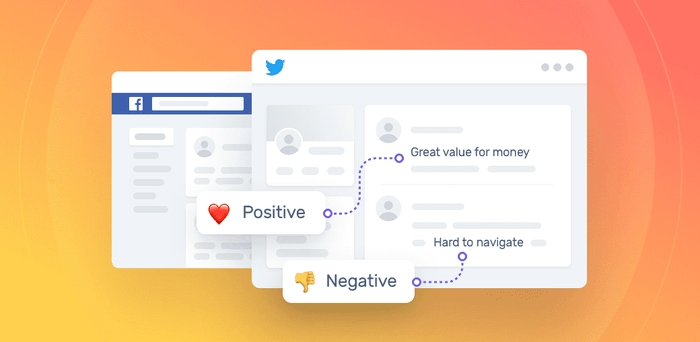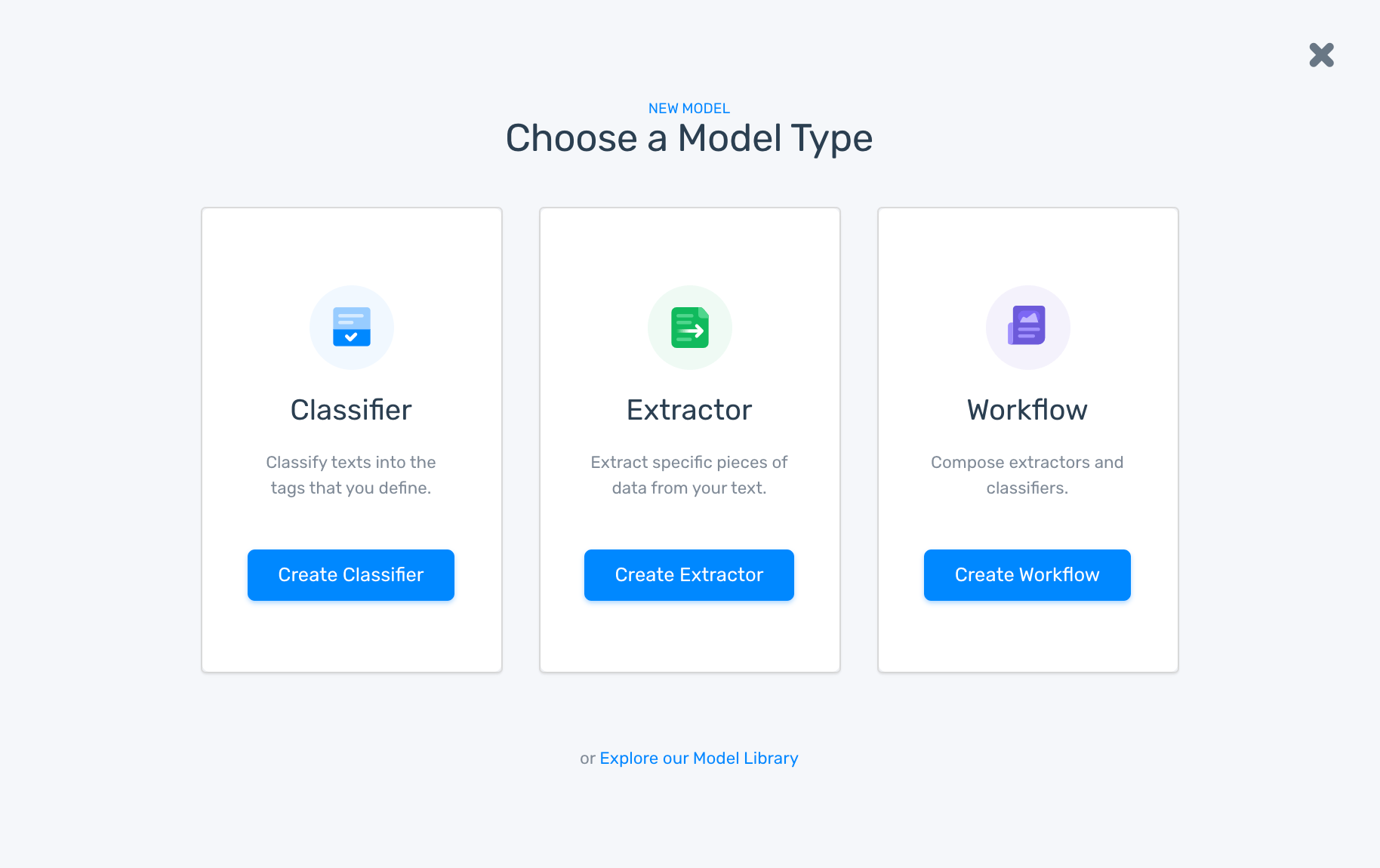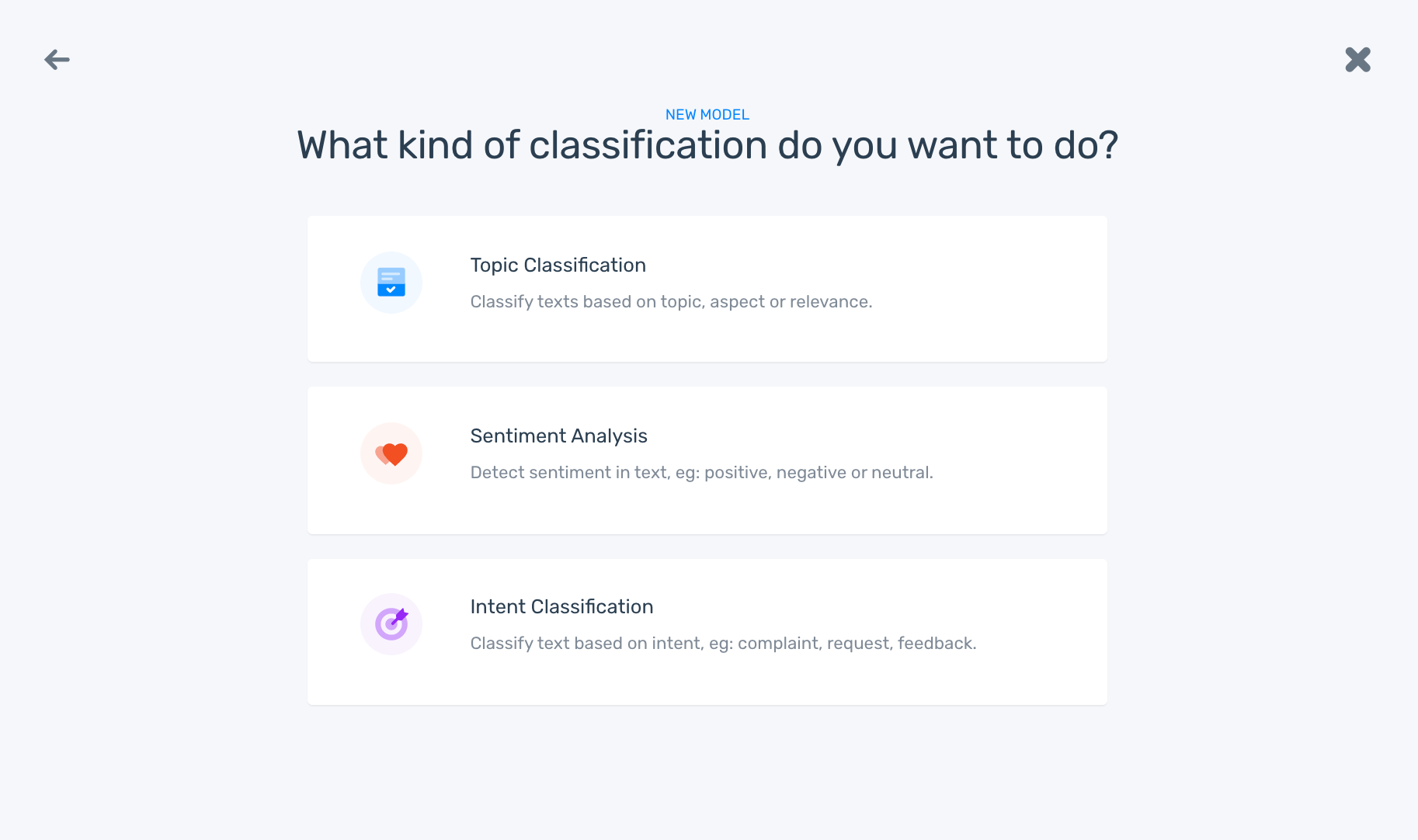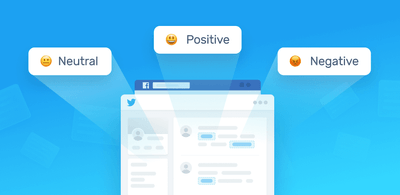Social Media Sentiment Analysis: Why It’s Important for Tracking Social Mentions

Customers often leave their opinions on a whim, on social media platforms like Twitter, Facebook, and Instagram, providing businesses with a wealth of immediate customer feedback.
As social mentions grow, however, manually monitoring social media conversations is no longer viable. Fortunately, sentiment analysis are helping businesses speed up the process by automatically putting customer opinions into context.
In this post, we’ll explain what sentiment analysis is, why it’s important, and how businesses are using it to monitor brand performance. We’ll also show you how easy it is to automate social media monitoring with sentiment analysis tools like MonkeyLearn.
What Is Sentiment Analysis?
Sentiment analysis (also known as opinion mining) is a machine learning task that lets you know how customers feel about your business.
Social media sentiment analysis focuses on customer conversations in the social sphere, helping businesses monitor brand sentiment, and understand the negative or positive emotions surrounding their products and services. In short, sentiment analysis is a social listening tool that tells you what customers love or hate about your business in real time.
Using natural language processing (NLP) and machine learning algorithms, sentiment analysis tools are able to understand complex language structures and sort text in a similar way to humans – only a lot faster and using one set of criteria!
By connecting social media sentiment analysis tools to your incoming social media data, you’ll be able to detect and analyze social mentions in a scalable, reliable, and accurate way.
Why Is Social Media Sentiment Analysis Important?
Positive social mentions about brands increase the likelihood of a customer making a purchase or remaining loyal, so it’s important to know what you or your competitors are doing right. On the other hand, negative feedback helps businesses recognize their customers’ pain points and helps them make improvements to their products and services.
Social interactions show no sign of slowing down, and you’ll need to turn towards sentiment analysis tools to keep on top of all your positive and negative social mentions so that you can shape your business for the better.
Let’s take a look at why social media sentiment analysis is important:
Customer Service That’s Always On
Brands can monitor their mentions in real time, so they’re able to address both positive and negative mentions at the drop of a hat.
Not only does this show your customers that you are paying close attention to their needs, but it also improves the customer experience because you’re able to respond in a timely manner.
Responding to ‘urgent’ feedback or detecting spikes in negative comments on social media could help you turn a bad situation into a positive outcome for both your business and customers. Imagine if you could quickly detect a spike in negative social mentions and get all hands on board to turn the situation around.
Scaling Social Data Analysis
Sentiment analysis tools can process huge amounts of social data in a matter of seconds, allowing you to scale up – or down – easily. Even if you’re experiencing high volumes of data, due to seasonal fluctuations or a recent product release, you’ll be able to meet customer demands without having to worry about the cost of hiring new employees.
Check out this tutorial on how to do sentiment analysis on Facebook data.
Real-Time Product Feedback
Your customers speak directly to you on social media, telling you what they like and dislike. Get instant feedback about marketing campaigns or product launches and immediately identify any pitfalls.
You might notice an increase in negative social mentions about poor performance. If you pass this feedback onto product teams, they can handle these issues as quickly as possible. On the other hand, customers might be praising your new feature.
Either way, sentiment analysis can help you gain insights about features that customers love, areas of your business that need improving (customer support, pricing, user experience, etc.), or alert you to bugs/defects you need to fix.
Consistent Analysis and Accurate Insights
Manually sorting social data by sentiment can lead to inconsistencies. You see, humans are prone to error, especially when carrying out repetitive tasks. Not only that, but they’re also subjective. In contrast, automated, machine learning-based sentiment analysis models are trained with one set of rules, which means that they apply the same set of criteria to each text.
If you train your social media sentiment analysis model to correctly understand the difference between negative and positive social mentions, you can ensure that your model will deliver accurate insights.
Monitoring Competitors for Market Research
It’s always a good measure to keep an eye on what your competitors are doing – right and wrong. With sentiment analysis, you can compare how customers mention topics on social media platforms and discover if there’s an area, feature, or product you should improve.
Analyzing competitors’ social media conversations might also lead to new opportunities. Could you provide customers with a better product or service that better suits customer needs, or is there a feature that customers love that you could implement in your product?
How to Do Real Time Sentiment Analysis on Social Media
Getting started with sentiment analysis is easy with tools like MonkeyLearn. Specializing in text analysis, MonkeyLearn offers various pre-trained machine learning models for sentiment analysis, intent detection, topic labeling, feature extraction, and more.
You also have the option to train your own model via an intuitive user interface and using industry-specific training data,. Let's take a look at how easy it is to analyze your social media mentions with a sentiment analysis tool, in just three simple steps:
1. Gather Social Media Data
To collect data from social media platforms like Facebook, Twitter, Reddit, and YouTube , you can use web scraping tools, public data sets, and APIs. Let’s take a closer look:
Zapier
This platform connects to MonkeyLearn via an API and allows you to create a zap (or rule) that ‘instructs’ Zapier to send brand mentions on social media to MonkeyLearn’s sentiment analyzer. Check out this guide to using Zapier with MonkeyLearn.
Dexi
This web automation software, or browser-based web crawler, offers an extraction automation tool that you can integrate with MonkeyLearn. For example, you can export data from Facebook to .CSV files, simplifying the upload of data to a sentiment analysis model.
Content Grabber
This web scraping tool extracts content from the website of your choice and saves it as structured data. With Content Grabber, you could extract data from Twitter and export it to a .CSV or Excel file, making it readily available for analysis.
Pattern
Pattern is a GitHub web mining module for Python that includes tools for scraping, natural language processing, machine learning, network analysis, and visualization. It offers datasets for Facebook, Twitter, YouTube, and more.
APIs
Most social media platforms have readily available APIs to extract data.
- The Graph API is the primary way to get data into and out of Facebook
- Twitter’s API enables users to access and interact with public Twitter data
- The Python Reddit API Wrapper allows users to scrape data from subreddits, get comments from a specific post, and much more.
2. Pre-process and Clean Social Data
Once you have your social media data, you’ll need to prepare it. This involves transforming unstructured data into information that machines can understand so that they can yield accurate results.
Social mentions are often riddled with abbreviations, incorrect grammar, emojis, special characters, unidentifiable words, and so on. So, you’ll need to clean data to get rid of irrelevant words, duplicate text, blank spaces, and any other form of text that could skew your analysis.
Take a look at our guide on how to prepare your data.
3. Build a Social Media Sentiment Analysis Tool
First, try out MonkeyLearn’s pre-trained sentiment analysis model. Simply paste your social mentions and see how the tool classifies your data by positive, negative, or neutral.
For more accurate and relevant insights, we recommend you build a tailor-made sentiment analysis model. You’ll be able to apply your own negative and positive sentiment criteria, tailored to your business.
Before you begin, Request a demo.
1. Choose Your Model
Go to MonkeyLearn’s dashboard, click on ‘Create Model’ and choose to build a Classifier.

2. Select Sentiment Analysis
From the list of three available classifiers, choose the Sentiment Analysis option.

3. Upload Your Social Media Data
Once you’ve gathered and pre-processed/cleaned your data, use it to train your sentiment analysis model. MonkeyLearn gives you the option to upload Excel or CSV files.

4. Train Your Sentiment Analysis Model
You can train your model by assigning sentiments to at least 12 texts, which is the minimum number of sample texts the model requires before making its own predictions. Keep in mind that the more samples you use to train your model, the more accurate it will be.
5. Test Your Social Media Sentiment Analysis Model
Test your model by entering a text and asking the model to classify it. This will show you how confident your model is at classifying texts on its own.
Remember, you can always enter more sample texts to improve the accuracy levels of your model and boost its confidence when making predictions on its own.
Get Started with Social Media Sentiment Analysis
Social media interactions are a valuable source of information. They let you know how customers feel about your brand and how you can improve your business.
By using sentiment analysis tools to make sense of unstructured data, like tweets, Facebook comments, and Instagram posts, you can gain actionable insights that help you make intelligent decisions.
Performing sentiment analysis on social media data is straightforward with MonkeyLearn, whether you choose to use one of our pre-trained models or build your custom model. And if you get stuck on the way, we’re always here to help.
Visit MonkeyLearn, and start analyzing your social media data in a matter of seconds.

Inés Roldós
March 25th, 2020






